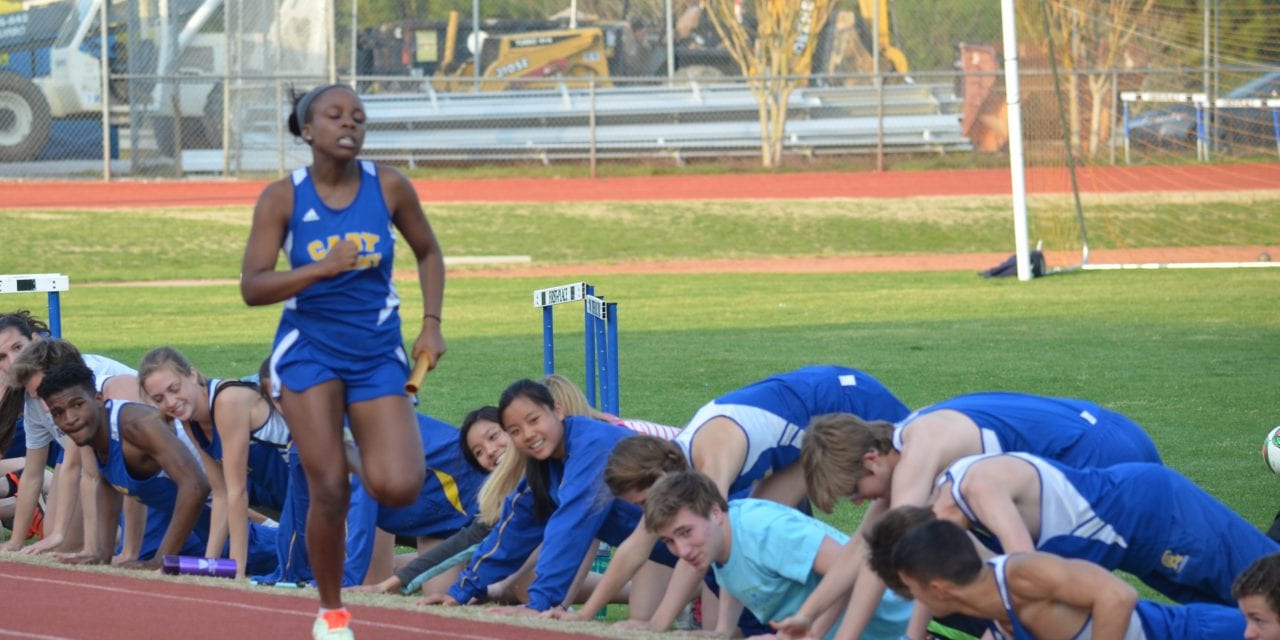Cary Academy is an academic powerhouse; it’s the San Francisco 49ers of the 80’s led by Joe Montana. We smash ACT and SAT scores and rightfully flaunt Discovery, Innovation, Collaboration and Excellence. Our halls are full of students donning the swag of their future: Davidson, Princeton, Cornell, our Triangle schools, and many more prestigious universities.
Our students don’t need sports to go to college, yet they come out in droves.
Last year 534 eligible (grades 7-12) students participated in at least one sport at Cary Academy. That’s nearly 81% of the population, a rate that has held steady for years. Since the inception of the Triple Play Letter (awarded to any athlete who participates in three varsity sports in one season) in 2013, the number of recipients has risen from an average of five to nearly twenty.
So, what’s the attraction? Why would students pressed for time to complete assignments, study for exams, and meet for school projects take a chunk of their afternoon to run around on an athletic field or court? From an economist’s standpoint, what’s the cost-benefit?
Physiologically there is no doubting the value of sports and exercise. Aside from staying healthy and in shape, journals are peppered with research providing evidence that exercise improves our mood, helps us sleep, and reduces stress and anxiety. Justin Rhodes, an associate professor of psychology at the University of Illinois at Urbana-Champaign, noted in Scientific American that the increase blood pressure and flow provide more energy and oxygen to the brain allowing it to perform better:
“. . . working up a sweat enhances our mental capacity in that the hippocampus, a part of the brain critical for learning and memory, is highly active during exercise. The hippocampus is tied to cognitive functioning and memory and the increased stimulation through exercise improves performance in both areas.”
As much as the biology side of me loves this, honestly, I’m not wagering my paycheck that our student-athletes are playing sports to develop their hippocampus.
Then there’s the benefit of character development. Do a Google search and you’ll find oodles of findings indicating that participation on a sports team teaches us how to compete and face adversity; leads to a sense of belonging, responsibility, and self-confidence; and develops discipline, accountability, and time management.
But, being a part of a team is much more.
There’s a sense of pride and dynamic that is only created when all members are working toward a common goal and supporting one another. There is the passion and energy that players feel from the spectators and their teammates.
Did you go to Homecoming and listen to the cheers of X-Factor and our cheerleading team? Have you been to a Track/Field meet when the team gathers along the inside lane and does pushups or “rows the boat” as the runners approach? Or, were you at the TISAC championship swim meet when the Triangle Aquatic Center was filled with chants of “CA Breaststroke” by swimmers as the main heat took to the blocks in a battle between CA and Ravenscroft? If you were, you witnessed that passion and spirit first hand.
There is no doubt that the benefits of health and fitness, character development, and teamwork that sports provide, coupled with the rigors of CA’s academic profile, produce well-rounded students. There’s no doubt that each attribute adds a piece of why our students like to play sports.
But, we may be over-analyzing the whole question, we tend to do that.
Why do our students play sports? When asked, senior Will Newman seemed to sum it up best in an eloquent and complex fashion – “It’s Fun!”

